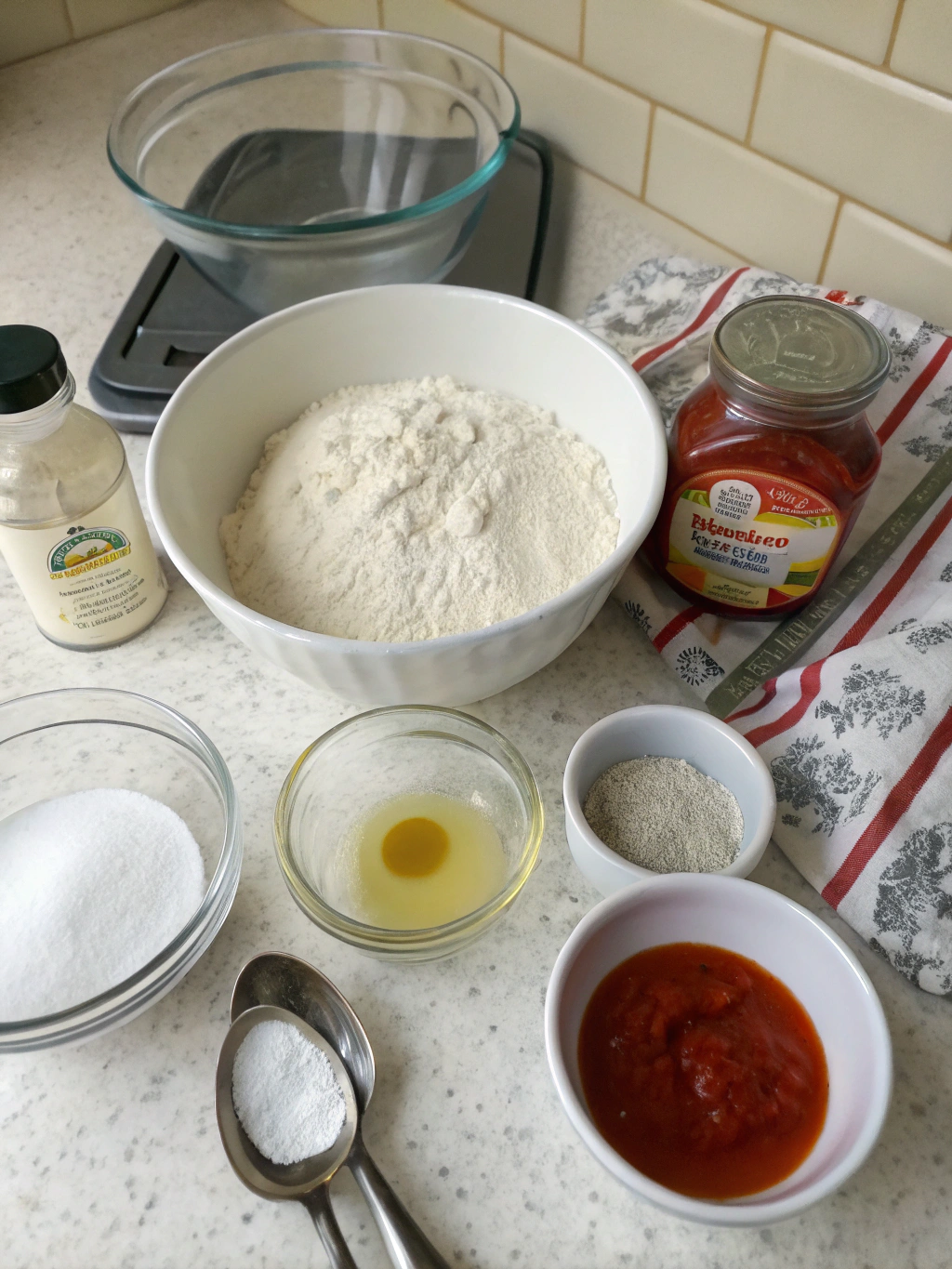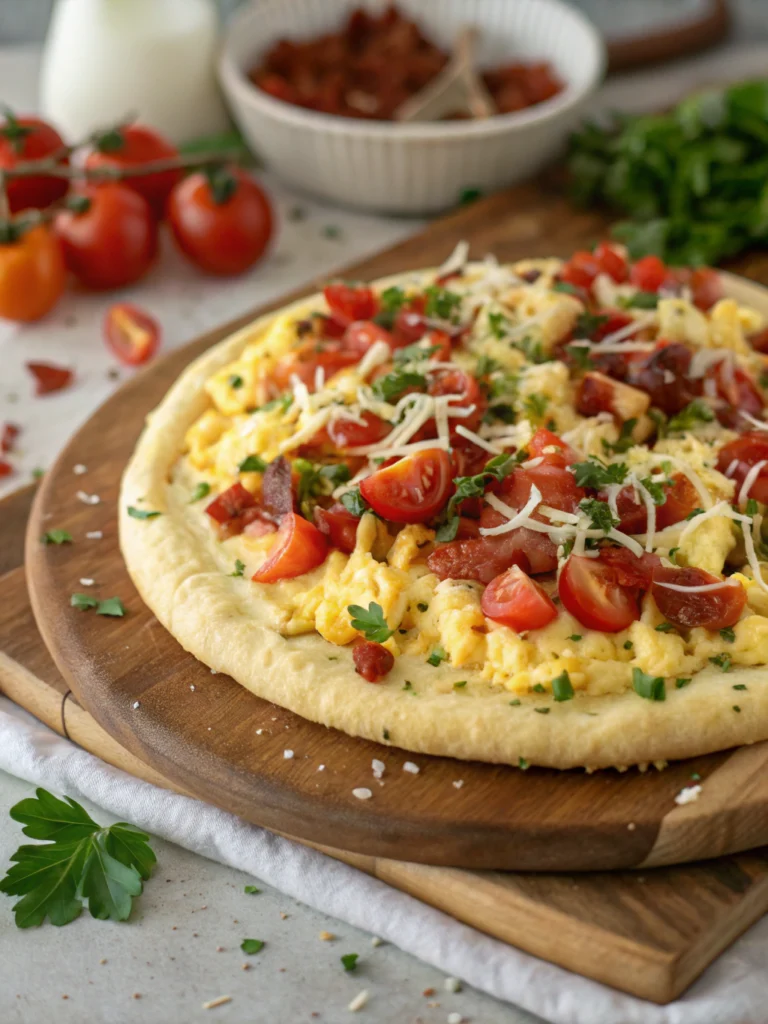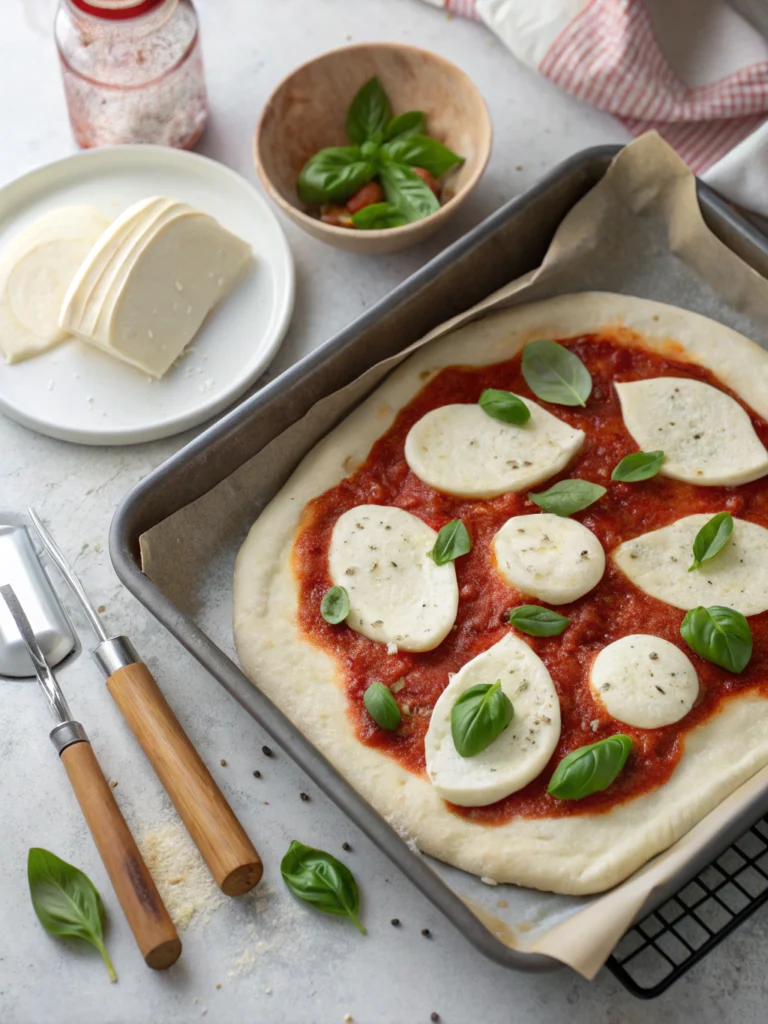11 Amazing King Arthur Pizza Dough Recipe: The Best Guide
11 Amazing King Arthur Pizza Dough Recipe: The Best Guide
Table of Contents
Have you ever wondered why some homemade pizzas are irresistibly delicious, while others fall flat (literally)? Is it the oven, the toppings, or the secret sauce? While all those elements matter, the true foundation of a fantastic pizza lies in the dough. Are you craving perfect pizza? Master the ultimate king arthur pizza dough recipe!
This guide unlocks amazing dough. Discover the secret now! We’re diving deep into the world of king arthur pizza dough recipe, revealing all the tips and tricks you need to bake pizza perfection every single time. Forget mediocre crusts – prepare for a culinary journey that transforms your kitchen into a pizzeria!
Why King Arthur Flour? Because it’s a name synonymous with quality and consistency in the baking world. Their flours are milled to exacting standards, giving you a reliable base for your pizza-making adventures. Whether you’re a seasoned baker or a newbie, this guide will provide the knowledge and confidence to conquer the king arthur pizza dough recipe.
Ingredients List

Here’s what you’ll need to create the perfect king arthur pizza dough recipe:
- King Arthur Unbleached All-Purpose Flour: 3 cups (360g). This is the heart of your dough. King Arthur flour’s higher protein content compared to some other brands yields a chewier, more structured crust.
- Instant Yeast: 2 ¼ teaspoons (1 packet). Instant yeast can be added directly to the dry ingredients without proofing.
- Salt: 1 ½ teaspoons. Salt is crucial for flavor and controlling yeast activity. Don’t skip it!
- Warm Water: 1 ¼ cups (300g), lukewarm (105-115°F). The right temperature activates the yeast without killing it. Use a thermometer for accuracy.
- Olive Oil: 2 tablespoons. Olive oil adds flavor and richness to the dough, contributing to a softer, more pliable texture.
- Optional: Sugar or Honey: ½ teaspoon. A tiny amount of sugar or honey can help activate the yeast and add a touch of sweetness, though it’s not essential.
Potential Substitutions:
- Flour: For a whole wheat pizza, substitute up to half of the all-purpose flour with King Arthur Whole Wheat Flour. Keep in mind that whole wheat flour absorbs more water, so you might need to add a tablespoon or two of extra water to achieve the desired dough consistency.
- Yeast: If you’re using active dry yeast instead of instant yeast, proof it in the warm water with a pinch of sugar for 5-10 minutes before adding it to the dry ingredients.
- Olive Oil: You can use another neutral-flavored oil like canola or vegetable oil, but olive oil adds a superior flavor.
This simple yet potent combination of ingredients will set you up for a king arthur pizza dough recipe that’s both delicious and easy to work with. Remember, quality ingredients make a difference!
Timing
- Preparation Time: 20 minutes
- Rising Time: 1-2 hours (or overnight in the refrigerator)
- Cooking Time: 12-15 minutes
- Total Time: Approximately 1 hour 32 minutes to 2 hours 35 minutes (excluding overnight refrigeration).
This king arthur pizza dough recipe requires a rising period to allow the yeast to work its magic, developing the gluten and creating that airy, flavorful crust we all crave. The rising time can vary depending on the temperature of your environment. A warmer room will result in faster rising. However, a slow, cold rise in the refrigerator (overnight or even up to 24 hours) develops even more flavor.
Think of it as a pizza spa day! Many pizza aficionados swear by a cold ferment for the ultimate taste experience. According to a study by the American Institute of Baking, slow fermentation can increase the aromatic compounds in bread dough by up to 30%. So, patience is key to a truly exceptional king arthur pizza dough recipe.
Step-by-Step Instructions

Step 1: Combine Dry Ingredients
In a large bowl, whisk together the King Arthur flour, instant yeast, and salt. Make sure they’re evenly distributed. This ensures that the yeast is properly dispersed throughout the dough, leading to consistent rising.
- Tip: Use a kitchen scale for the most accurate measurements, especially with flour. Even a slight variation in flour amount can impact the dough’s texture.
Step 2: Add Wet Ingredients
Add the warm water and olive oil to the dry ingredients.
- Tip: Gradually add the water while mixing, as some flours may require slightly more or less liquid. The goal is to create a shaggy dough that’s not too sticky or too dry.
Step 3: Mix the Dough
If using a stand mixer: Use the dough hook attachment and mix on low speed for 6-8 minutes, or until the dough is smooth and elastic.
If mixing by hand: Turn the dough out onto a lightly floured surface and knead for 8-10 minutes, until it becomes smooth and elastic.
- Tip: The “windowpane test” is a great way to check if your dough is properly kneaded. Stretch a small piece of dough thinly between your fingers. If you can stretch it thin enough to see light through it without tearing, it’s ready.
Step 4: First Rise
Place the dough in a lightly oiled bowl, turning to coat. Cover with plastic wrap or a damp towel and let rise in a warm place for 1-2 hours, or until doubled in size.
- Tip: For a slow, cold rise and enhanced flavor, place the covered dough in the refrigerator for 8-24 hours.
Step 5: Divide and Shape
Gently punch down the dough to release the air. Divide the dough into the desired number of portions (usually 2-3 for pizzas). Shape each portion into a ball.
- Tip: For easier shaping, let the dough balls rest for 10-15 minutes before stretching or rolling. This allows the gluten to relax, making the dough more pliable.
Step 6: Preheat Your Oven (Very Important!)
Preheat your oven to the highest temperature it can reach, ideally 500-550°F (260-290°C). Place a pizza stone or baking steel in the oven while it preheats. This ensures a crispy crust.
- Tip: If you don’t have a pizza stone or steel, you can use an inverted baking sheet.
Step 7: Shape Your Pizza
On a lightly floured surface, stretch or roll out each dough ball to your desired thickness and shape.
- Tip: For a truly authentic pizza experience, try hand-stretching the dough instead of using a rolling pin. This preserves the air pockets in the dough, resulting in a lighter, airier crust.
Step 8: Add Toppings
Transfer the shaped dough to a pizza peel dusted with cornmeal or semolina flour (this will help it slide easily onto the hot stone). Add your favorite toppings.
- Tip: Don’t overload the pizza with toppings, as this can make the crust soggy.
Step 9: Bake
Carefully slide the pizza onto the preheated pizza stone or baking steel. Bake for 12-15 minutes, or until the crust is golden brown and the cheese is melted and bubbly.
- Tip: Keep a close eye on the pizza, as cooking times can vary depending on your oven.
Step 10: Enjoy!
Remove the pizza from the oven, let it cool slightly, slice, and enjoy your homemade king arthur pizza dough recipe masterpiece!
Nutritional Information
(Per slice, based on a pizza divided into 8 slices – this is an estimate and will vary based on toppings):
- Calories: Approximately 250-350
- Protein: 8-12g
- Fat: 8-15g
- Carbohydrates: 35-50g
- Fiber: 1-3g
Data Insight: Studies show that homemade pizza generally contains fewer preservatives and less sodium compared to store-bought or restaurant pizzas.
Healthier Alternatives for the Recipe
Want to indulge in your king arthur pizza dough recipe craving without the guilt? Here are some healthier alternatives:
- Whole Wheat Flour: Substitute up to 50% of the all-purpose flour with King Arthur Whole Wheat Flour. This will increase the fiber content and add a nutty flavor.
- Reduce Olive Oil: While olive oil contributes to flavor and texture, you can reduce the amount slightly without significantly impacting the final product.
- Healthy Toppings: Load up on vegetables! Spinach, bell peppers, onions, mushrooms, and tomatoes are all excellent choices.
- Lean Protein: Opt for lean protein sources like grilled chicken, turkey pepperoni, or plant-based alternatives.
- Low-Fat Cheese: Use part-skim mozzarella or other low-fat cheese options.
- Cauliflower Crust (Alternative): For a truly low-carb option, consider using a cauliflower crust instead of traditional pizza dough. There are many recipes available online.
Serving Suggestions
- Classic Margherita: Simple and elegant, topped with fresh mozzarella, tomato sauce, and basil.
- Pepperoni Paradise: A crowd-pleaser with pepperoni, mozzarella, and tomato sauce.
- Veggie Supreme: A colorful and flavorful option with a variety of vegetables like bell peppers, onions, mushrooms, olives, and spinach.
- BBQ Chicken Pizza: A fun and flavorful twist with BBQ sauce, grilled chicken, red onion, and cilantro.
- Hawaiian Pizza: A controversial but beloved option with ham and pineapple.
- Gourmet Pizza: Get creative with your toppings! Try fig and prosciutto, goat cheese and roasted vegetables, or truffle oil and mushrooms.
Personalized Tip: Serve your homemade king arthur pizza dough recipe with a side salad and a light vinaigrette for a complete and balanced meal.
Common Mistakes to Avoid
- Using the Wrong Temperature Water: Water that’s too hot will kill the yeast, while water that’s too cold won’t activate it properly. Use a thermometer to ensure the water is between 105-115°F (40-46°C).
- Over-Kneading or Under-Kneading: Over-kneading can result in a tough crust, while under-kneading can lead to a flat, dense crust. Knead the dough until it’s smooth and elastic.
- Not Allowing Enough Rising Time: Insufficient rising time will result in a dense, flavorless crust. Allow the dough to rise until doubled in size.
- Overloading Toppings: Too many toppings can weigh down the crust and make it soggy. Use a balanced amount of toppings.
- Not Preheating the Oven Hot Enough: A high oven temperature is essential for a crispy crust. Preheat your oven to the highest temperature it can reach.
Data Insight: According to a survey of home bakers, the most common mistake when making pizza dough is using water that’s either too hot or too cold.
Storing Tips for the Recipe
- Unbaked Dough: Unbaked king arthur pizza dough recipe can be stored in the refrigerator for up to 3 days. Wrap it tightly in plastic wrap or place it in an airtight container. You can also freeze it for up to 2 months. Thaw the dough in the refrigerator overnight before using.
- Baked Pizza: Leftover baked pizza can be stored in the refrigerator for up to 3-4 days. Reheat it in the oven, toaster oven, or microwave. For best results, reheat in the oven at 350°F (175°C) until warmed through.
- Prepping Ahead: You can make the king arthur pizza dough recipe ahead of time and store it in the refrigerator for a slow, cold rise. This will develop the flavor and make it even more delicious. You can also chop your toppings ahead of time to save time on pizza night. If you happen to have costco pizza dough, you can follow the same steps above for baking.
Conclusion

Mastering the king arthur pizza dough recipe is the key to unlocking pizza perfection at home. By following these simple steps and tips, you can create a crust that’s crispy, flavorful, and perfectly complements your favorite toppings. From understanding the importance of quality ingredients to avoiding common mistakes, this guide has equipped you with the knowledge and confidence to bake amazing pizzas every time.
Now it’s your turn! Try this king arthur pizza dough recipe, experiment with different toppings, and share your creations with friends and family. Don’t forget to leave a comment below and let us know how your pizza turned out. Happy baking!
If you happen to have costco pizza dough, you can follow the same steps above for baking.
FAQs
Q: Can I use bread flour instead of all-purpose flour for the king arthur pizza dough recipe?
A: Yes, you can! Bread flour has a higher protein content than all-purpose flour, which will result in a chewier, more structured crust. However, all-purpose flour works perfectly well and is more readily available.
Q: How do I prevent the pizza dough from sticking to the pizza peel?
A: Dust the pizza peel generously with cornmeal or semolina flour before placing the shaped dough on it. This will create a barrier between the dough and the peel, allowing it to slide easily onto the hot stone.
Q: Can I freeze the baked pizza?
A: Yes, you can freeze baked pizza. Let it cool completely, then wrap it tightly in plastic wrap and foil. Freeze for up to 2 months. Reheat in the oven at 350°F (175°C) until warmed through.
Q: My pizza crust is always soggy. What am I doing wrong?
A: There are several factors that can contribute to a soggy pizza crust. Make sure you’re preheating your oven to a high temperature (ideally 500-550°F/260-290°C). Don’t overload the pizza with toppings. And consider par-baking the crust for a few minutes before adding the toppings.
Q: How do I make the crust crispy?
A: Using a pizza stone or baking steel is the best way to achieve a crispy crust. Also, make sure you’re using a high oven temperature and not overloading the pizza with toppings. Some people also like to brush the crust with olive oil before baking.
Q: Can I make this king arthur pizza dough recipe in a bread machine?
A: Yes, most bread machines have a dough setting that you can use to make pizza dough. Simply add the ingredients to the bread machine according to the manufacturer’s instructions.
Q: What is the best way to reheat leftover pizza?
A: The best way to reheat leftover pizza is in the oven at 350°F (175°C) until warmed through. This will help to crisp up the crust and melt the cheese. You can also reheat it in a toaster oven or on a skillet on the stovetop. Avoid reheating pizza in the microwave, as this can make the crust soggy. This simple king arthur pizza dough recipe has been great in my experience.
I think that with the perfect pizza, you can enjoy a slice of heaven! The king arthur pizza dough recipe is a slice of heaven.
#recipe_meatEnd






